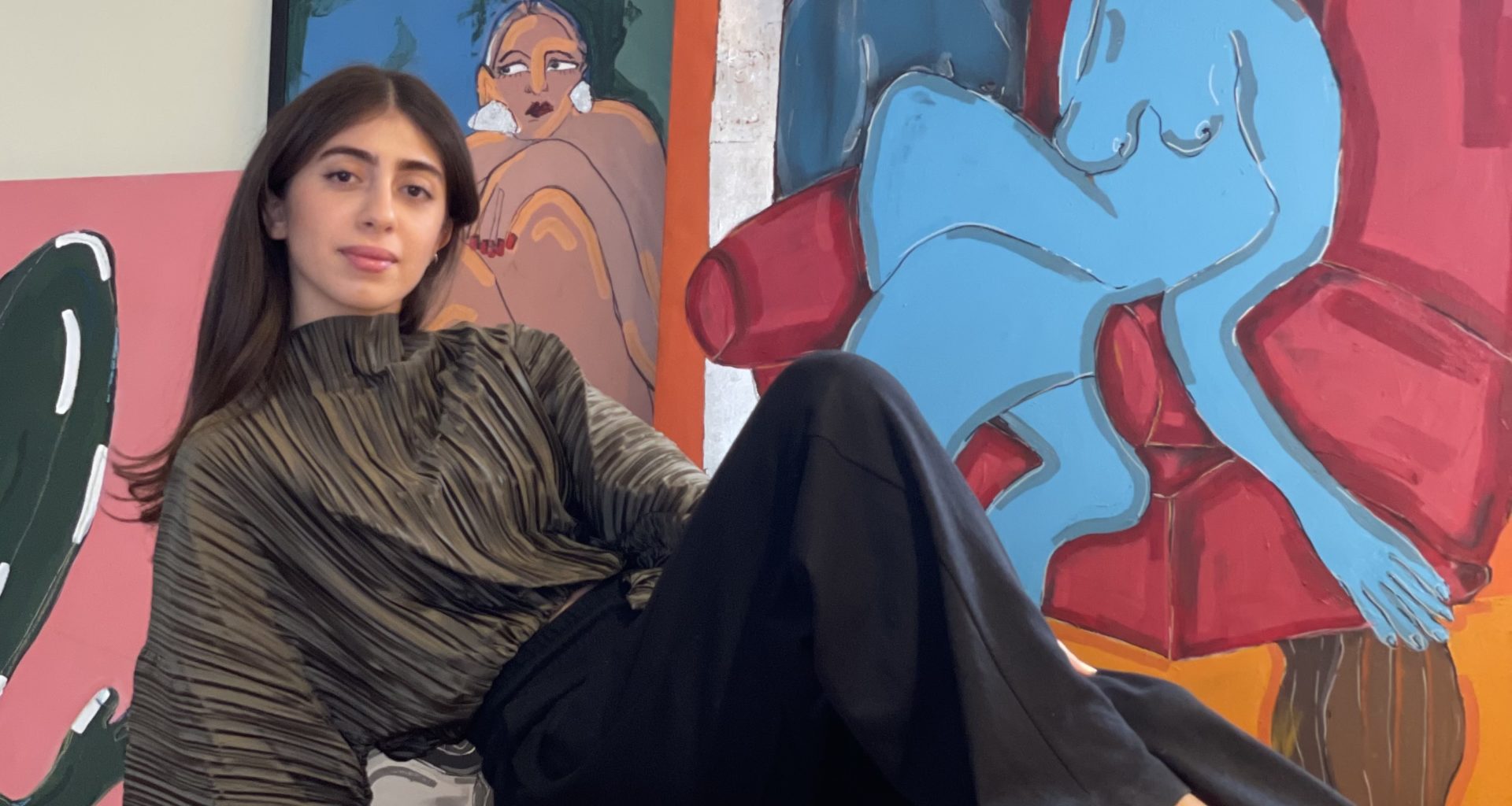Mays Al Moosawi creates art to find her voice that was buried by culture and traditions. Based in Oman, the 27-year-old visual artist’s work depicts female figures and their stories. She uses her art to provide an outlet to women's emotions and insecurities. Mays has showcased her work globally and participated in several shows including Art in Mind, Brick Lane Gallery London, UK (2017), Affordable Art Fair (2019), Reel Oman at R House, Riyadh, KSA (2020), NFT M.E. Exhibition, Emergeast, Opensea (2021), and 'Dreaming Tomorrow', Online Exhibition, Emergeast (2022).
We sat down with Mays to discuss her subject matter and how it’s influenced by her views of Omani and Arab society. She spoke to us about how her own identity has been impacted by the challenges the women from her community in Muscat experienced, her opinion about the creative scene in Oman, and what it takes to succeed in the arts world.
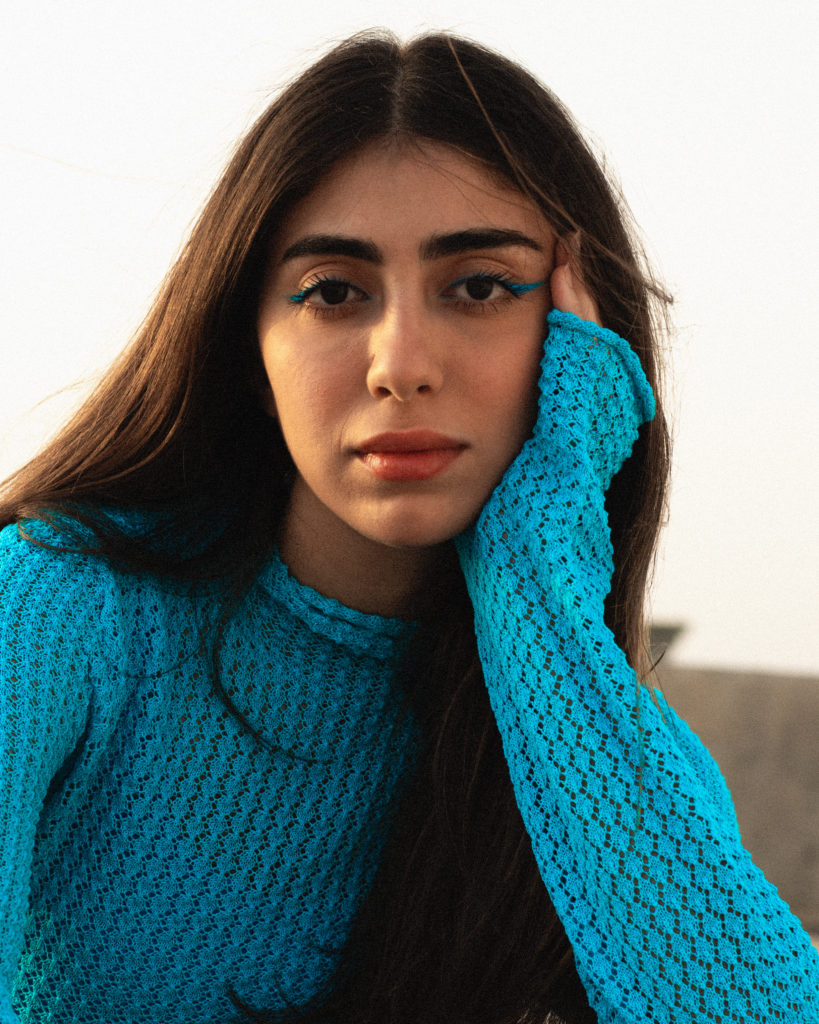
Saira Malik (S.M.): How did your childhood influence your choice to become an artist?
Mays Al Moosawi (M.M): Growing up in a family of creatives helped me find my passion from an early age, I always knew I wanted to be an artist. I was always the kid who had sketches on my room wall, notebooks, and even my shoes and then while growing older I remember receiving a harsh comment from one of my art teachers, saying that I am not good enough to be artist, which made me stop creating until the age of 16, when I realized that art is the only thing I am passionate about and I won’t succeed studying anything else.
(S.M.): Tell us about the Omani creative scene?
(M.M.): With complete honesty, it could be a lot better; there are a lot of potential and young artists that are well considered regionally through many different mediums. I only wish more artists would start breaking out of the norm and start creating more impactful material. I am forever in their support.
(S.M.): In your artist statement, you say “Most of my artworks have female figures, which represents the society of women I was raised in, since an early age I was always surrounded by women, hearing their stories and insecurities had a huge impact on me growing up.” Why is it so important to you to showcase these issues women are facing through art?
(M.M.): Because one way or another this needs to be highlighted in society today. Art is our voice and it feels like my one mission from day one has been to bring this topic up for discussion; almost as a constant reminder for women and myself that we are not alone in this and art represents us.
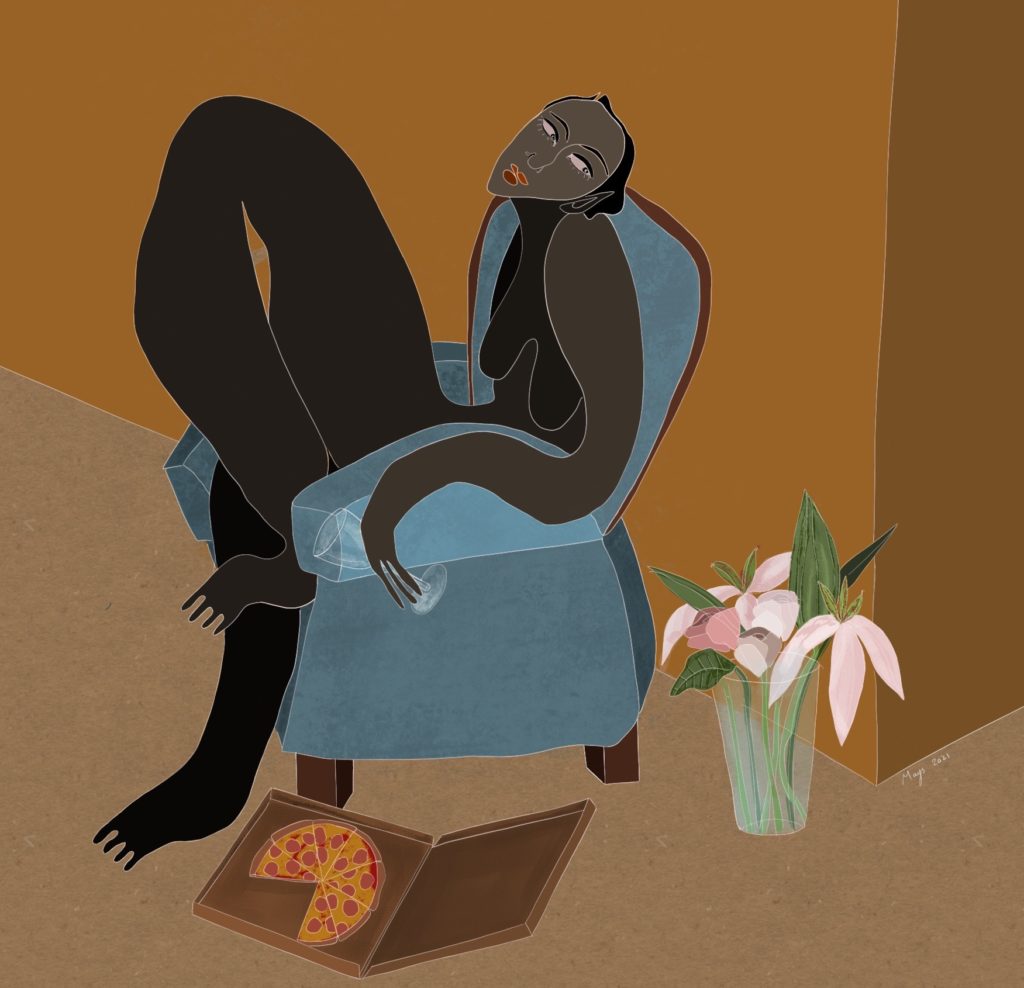
Represented by Emergeast
(S.M.): Is it unusual, or even taboo, to make art about women’s issues and what pressures do you face as a female artist?
(M.M.): Unfortunately, my art is constantly misunderstood – the viewers are often surprised to see the way I present figurative works in the manner that I do. The taboo is not the subject but in fact the way I execute the figures.
(S.M.): You went abroad to study at Coventry in the United Kingdom. How did that impact your career and did it give you the professional guidance you think you needed?
(M.M.): Generally, moving to a new place made me break out of my comfort zone. It helped me create art with a different mind set but also allowed me to discipline myself to be a professional.
(S.M.): Is your art spontaneous and driven by your emotional state at the time?
(M.M.): The beauty of the process is that it comes in many different ways and the more random the source of the inspiration is, the more excited I get to finish the artwork.
(S.M.): What do you think needs to be done to promote art about women’s issues and who are the local pioneers that are pushing for change?
(M.M.): If female artists are more popularized then it becomes a cultural norm; that is the goal and every female artist in the region is doing that in their own way such as Dana Al Mutawa in photography, Ruqaiya al Blushi in Fine Art, and Haneen al Moosawi in design.
(S.M.): What emotions does your audience feel when they see your work? What emotions do you want to evoke from your audience?
(M.M.): I feel like this question is directed to my audience more than it is to me. People are often provoked by the nudity of the figures; most feel emotionally connected, especially women. But the only thing I would like to evoke is their raw and honest reviews of the work – I just want them to feel something.
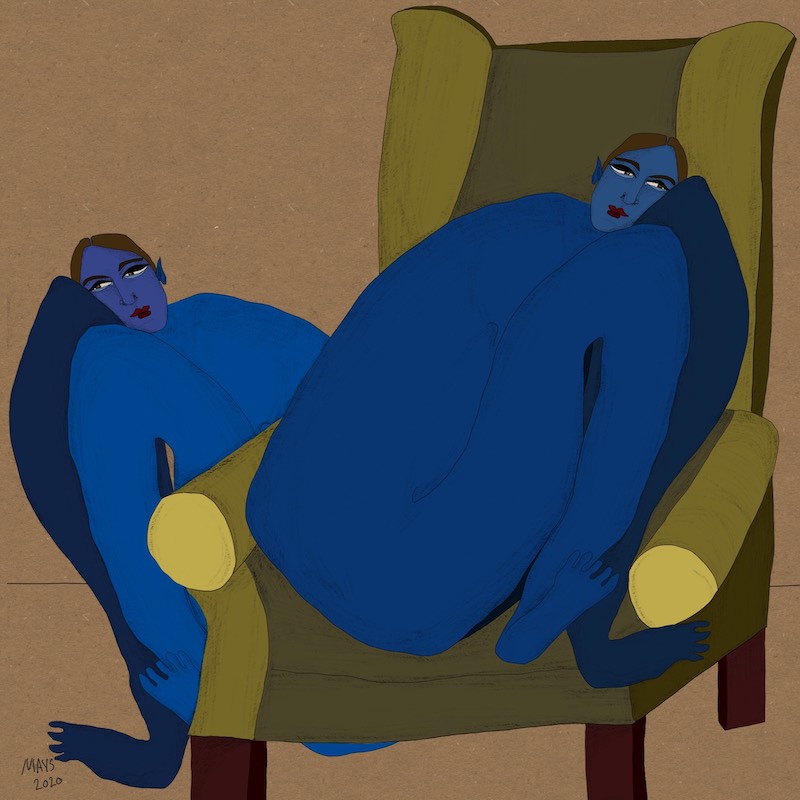
Represented by Emergeast
(S.M.): Is your work feminist, in your opinion?
(M.M.): My work is not entirely based on feminism; there are other topics that I touch on as well such as emotions, trauma, growth, and even simply my life experiences.
(S.M.): What are the stereotypes about artists that you wish would go away?
(M.M.): That art is not an ideal “job” and that I should get a “real” one.
(S.M.): Do you think that art can change the public’s perception of women?
(M.M.): I think that art plays a big role but it takes a lot more to change the public’s perception.
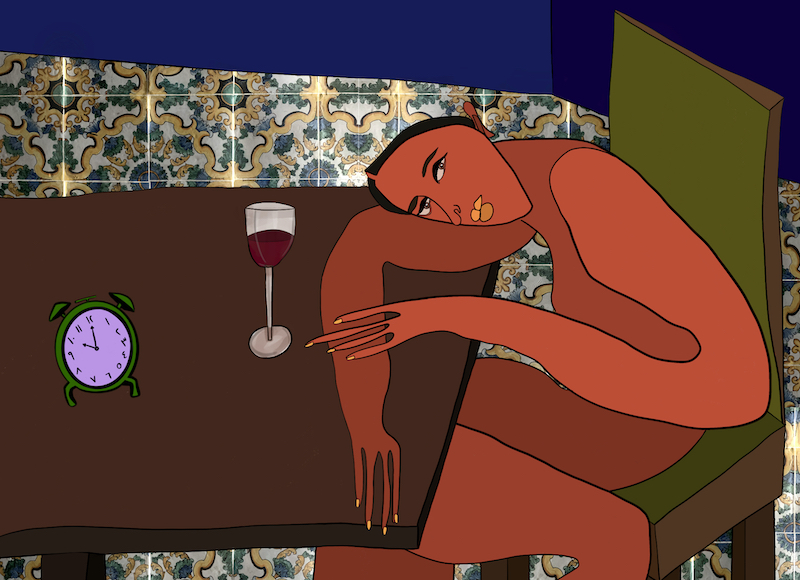
Represented by Emergeast
(S.M.): What are the challenges related to being a full-time artist? Are there ways an artist can ensure it’s a sustainable career path?
(M.M.): Nothing is a sustainable career path, what you can do is work hard and produce as much work as you can and love what you do.
(S.M.): What is your proudest career achievement?
(M.M.): I’m proud of every step that I took to reach where I am but I’m not thinking about my achievements just yet, I’ve still got a long way to go.
(S.M.): What message do you have for young emerging female artists who are inspired by your art?
(M.M.): It’s not always what you expect, the life of an artist is hard but if it is something that you love – do whatever you can to pursue it. Do not give up on the work you believe in and carry yourself with confidence because one day things will work out for you.
instagram.com/maysalmoosawi
– Saira Malik
Image supplied by Mays Almoosawi

